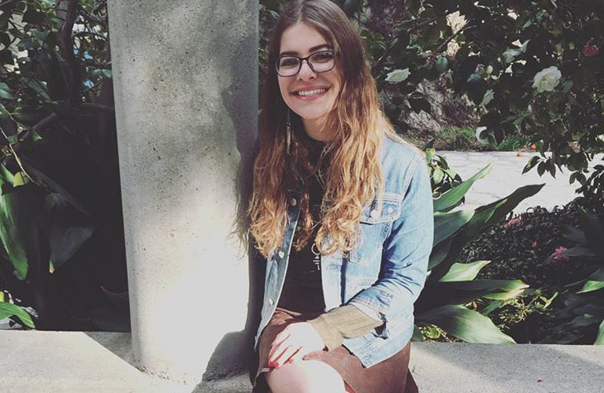
As a young Scripps College student interested in philosophy, Alexandra “Sasha” Leibholz ’16 had no idea her academic quest would ultimately lead her to explore life’s mysteries through a completely different academic lens—that of epigenetics. Her interest in science was piqued in an introductory chemistry class as a first-year student, but it was her junior-year genetics class taught by Patrick Ferree, assistant professor of biology, that ignited her passion for molecular biology.
The topic of her senior thesis—exploring a particular genome elimination event in a wasp species where female-destined diploid eggs develop as haploid males—led to her recent success in having her research published in Nature’s Scientific Reports, and, ultimately, her current post-graduate job working as a junior research associate at NYU Langone Medical Center.
Leibholz says it was not only her experience and training while at Scripps, but the mentoring of Dr. Ferree she is grateful for.
“I was incredibly lucky to work with the professor I did and to engage at the level of undergraduate research at Scripps and the W.M. Keck Science Department,” Leibholz says. “Dr. Ferree is incredibly driven, and he was awarded a significant NSF grant that provided for the work we did in the lab. Plus, the digital microscopy equipment we used is mostly found in R1 universities [universities with the highest research activity]—not what a liberal arts science major usually has access to. Fortunately for me, a lot of the techniques and protocols I learned from Dr. Ferree I am able to use now in my work at NYU studying epigenetics in ants.”
Leibholz’s fascination with haplo-diploid–a genetic system in which females develop from fertilized (diploid) eggs and males from unfertilized (haploid) eggs–wasps as an undergraduate gave her glimpses into the secrets and hidden truths of the evolutionary process. Survival of the fittest, she explains, arises at many different levels; you have competition between different species, between members of the same species, between the cells of an organism, and, finally, between different elements within one genome. Leibholz was able to “see” how intragenomic (within a genome) conflict arises when genes inside a genome are not transmitted by the same rules, or when a gene increases its own transmission rate to the detriment of the rest of the genome.
Leibholz explains that classical genetics assumes that all components of the genome function together harmoniously to maximize fitness of the organism. However, certain genetic elements can act selfishly to gain a transmission advantage, sometimes even at the expense of the organism. This is the case in the jewel wasp where an extra unessential chromosome induces abnormal elimination of the paternal genome to facilitate its transmission. This chromosome does this by disrupting a series of “marks“ on the proteins interacting with the paternal DNA, ultimately leading to the destruction of the DNA immediately following fertilization.
Her research highlights that genome elimination in this system represents a unique chromatin basis that is distinct from other known elimination events, which are actually widespread in nature. It is worth noting that her work on the paper was of publication quality, Dr. Ferree stresses, proud of Leibholz’s contributions to the field.
Dr. Ferree also shares that Leibholz presented her work last year at the West Coast Chromatin and Chromosomes Conference in Southern California and won an award for the best presentation. “This was competing with graduate and post-doctoral students,” he notes. “It was unanimous from the selection committee that she won the award.”
It’s fair to say that the admiration among scientists is mutual.
“My mom is a lawyer, and my dad is a businessman, so my work in science is something of an anomaly in my family,” Leibholz says, laughing. She adds she knew she wanted to be in New York after graduation, and that Dr. Ferree helped make the connection that led to her job at NYU. “I’d love for this interview, this story, to serve as a formal ‘thanks’ to Dr. Ferree!”
Leibholz says she may ultimately pursue a PhD or MD degree.

